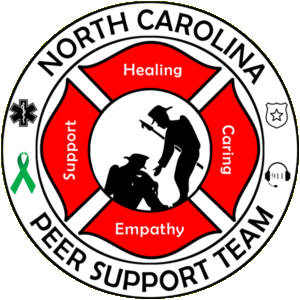First, ask yourself some questions…
• Do you ever need a drink to get you started in the morning or fall asleep at night?
• Do you feel guilty about your drinking?
• Do you or a family member think you need to cut back on how much you drink?
• Are you annoyed when other people comment on or criticize your drinking habits?
Definition: The way the term “Problematic Drinking” is used here is meant to cover a wide range of alcohol use and is not meant to just be designated for “alcoholics.” This tab can be used to help you identify if you may have an issue that could be addressed.
What constitutes a standard drink:
• Beer- 12 ounces (355 milliliters) and about 5 percent alcohol content.
• Malt Liquor- 8 to 9 ounces (237 to 266 milliliters) and about 7 percent alcohol content.
• Wine- 5 ounces (148 milliliters) and about 12 percent alcohol content.
• Hard Liquor- 1.5 ounces (44 milliliters) and about 40 percent alcohol content.
In men, five or more drinks a day and in women, four or more drinks a day may be approaching an alcohol use issue. If you are consuming this many drinks a day, more days than not it may be time to consider contacting a peer supporter and/or a psychology professional.
If you are not consuming this many drinks, do not stop reading as problematic drinking does not have to just be defined by amount of drinks.
Signs (i.e. what may be observed by others) and Symptoms (i.e. what is reported by firefighter):
• Not remembering conversations or commitments.
• Making a ritual of having drinks at certain times and become annoyed when this ritual is disturbed or questioned.
• Being irritable when your usual drinking time nears, especially if alcohol is not available.
• Keeping alcohol in unlikely places at home, at work or in your car.
• Gulping drinks, (i.e. ordering doubles or becoming drunk intentionally to feel good), or drinking to feel “normal”.
• Having legal problems or problems with relationships, employment or finances due to drinking.
• Losing interest in activities and hobbies that used to bring you pleasure.
Other Issues to Consider:
As defined in the Diagnostic and Statistical Manual- Fifth Edition (DSM-5) used by psychology professionals 11 areas may be present if alcohol use is a concern. They are as follows:
• Using alcohol in larger amounts (over time to feel the same effects) and/or for longer than you meant to.
• Wanting to cut down or stop using alcohol but are having a difficult time.
• Spending a great deal of time acquiring, using or recovering (hang overs) from drinking alcohol.
• Experiencing cravings or urges to drink alcohol.
• Having difficulties at work/home or within your significant relationships due to your alcohol use.
• Continuing to use regardless of these difficulties.
• Staying away from and/or not maintaining important commitments in your social, occupational or recreational activities dues to alcohol use.
• Having difficultly/inability in limiting the amount of alcohol you drink even when it puts your health at risk.
• Continuing to use even when you are aware that a physical/psychological problem is being caused by or worsened by alcohol use.
• Developing a tolerance to alcohol so that you need more to feel its effects.
• Experience physical withdrawal symptoms — such as nausea, sweating and shaking — when you don’t drink and are relieved by using alcohol.
Self-Help Goals:
Thought Goal: I drink because I think… (Insert problematic thought here)… I can stop or lessen my drinking by thinking… (i.e., About someone or something important to you that has been impacted, issues related to your overall wellness, changes you have wanted to make for yourself, etc.).
Feeling Goal: I drink because I feel… (Insert problematic feeling here)…. I can stop or lessen my drinking by feeling… (i.e., Do you remember what it felt like the last time you felt good sober?, the importance your family, friends, career, upcoming events, etc.).
Behavior Goal: I drink because my behavior is… (Insert problematic behavior here)….. I can stop or lessen my drinking by behaving… (Do you remember when you first were on the job…all the excitement and motivation?, or when you were first in your marriage/relationship?, are there ways for you to engage parts of your life by being present and available, etc.).
These goals are only examples; use them as guide not an absolute. You know if there is a problem, let now be the time to fix it.
Lastly:
Reaching out for help is never a sign of weakness, but rather one of strength. It may be intimating, annoying or frustrating to think about what do to and how to approach overcoming this, but it can be done. You do not have to do it alone. If you cannot reach or maintain all of these goals on your own, contact a peer supporter and/or a psychology professional.
Written by: Brad Carter FF/PM ILFFPS Coordinator and Cody Todd M.A., L.C.P.C. FPS Therapist
